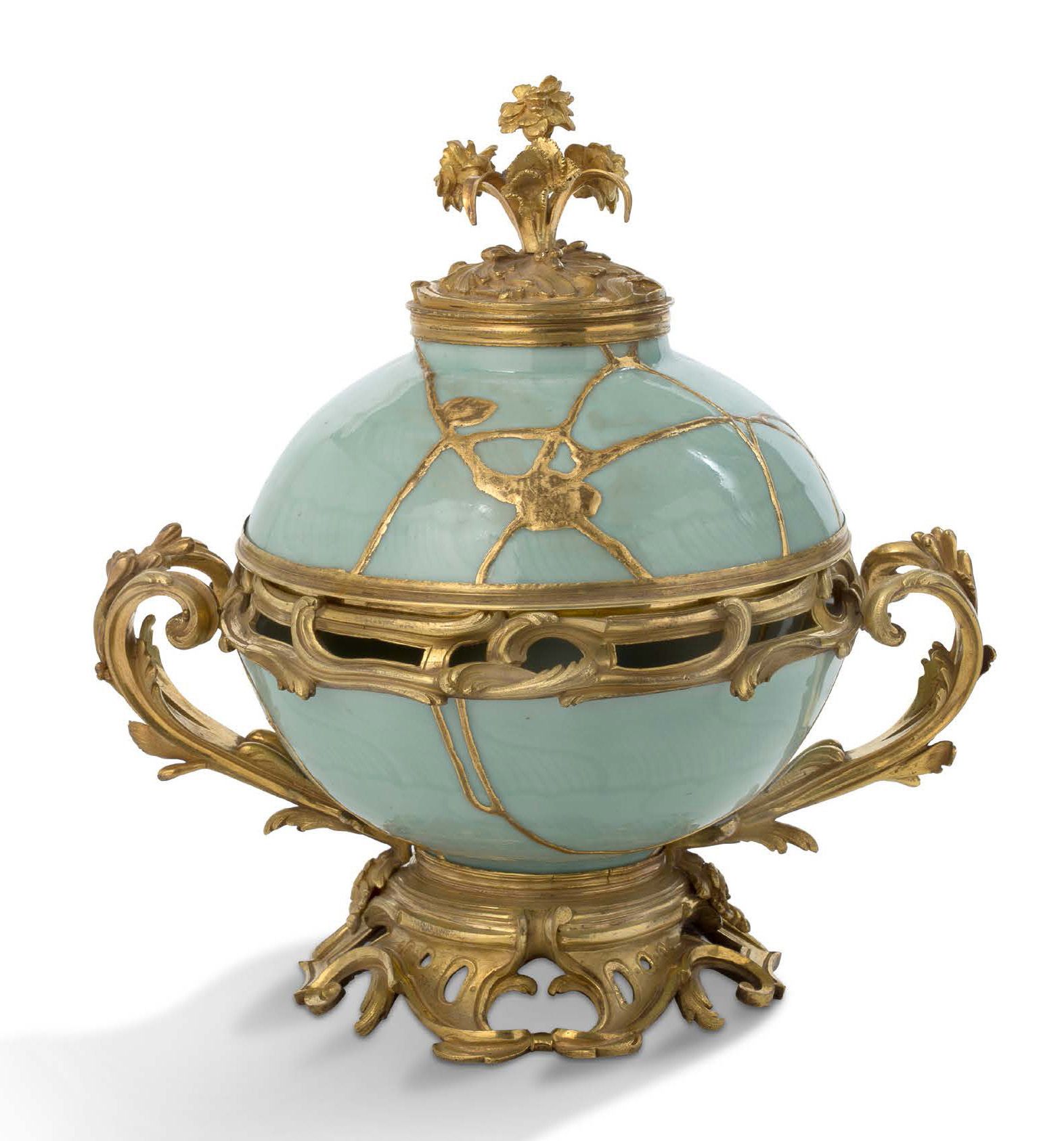Description
Celadon porcelain POT-POURRI (restored with gold by kintsugi) on a gilt bronze frame of Louis XV period. 18th century, circa 1750. Height : 30 cm - Width : 30 cm Celadon rotten pots are part of the objects in vogue in the middle of the 18th century, the mercantile merchants are the great purveyors. This one has an atypical characteristic: the celadon must have been broken, so it has been repaired with gold. Indeed, celadon is a Chinese porcelain, precious in the 18th century, the fact that it was broken did not imply throwing away the pieces, but was a pretext to make a quite exceptional object because of the repair that followed, called kintsugi, which consists of "gluing" the pieces back together with a paste covered with gold. From its mounting, this potpourri can be dated to the 1750's in a style traditionally associated with the second period of the rocaille, the plant motifs are of an ample, symmetrical and less "contoured" structure. The diary book of Lazare Duvaux, which accurately traces the commercial activity of one of the most important mercer merchants between 1748 and 1758 and a specialist in this type of mounted porcelain, mentions several pairs of potpourris. The names of the clients appear: the Countess of Bentheim, the Duke of Bouillon, the Duchess of Turenne, Madame de Pompadour.
95
Celadon porcelain POT-POURRI (restored with gold by kintsugi) on a gilt bronze frame of Louis XV period. 18th century, circa 1750. Height : 30 cm - Width : 30 cm Celadon rotten pots are part of the objects in vogue in the middle of the 18th century, the mercantile merchants are the great purveyors. This one has an atypical characteristic: the celadon must have been broken, so it has been repaired with gold. Indeed, celadon is a Chinese porcelain, precious in the 18th century, the fact that it was broken did not imply throwing away the pieces, but was a pretext to make a quite exceptional object because of the repair that followed, called kintsugi, which consists of "gluing" the pieces back together with a paste covered with gold. From its mounting, this potpourri can be dated to the 1750's in a style traditionally associated with the second period of the rocaille, the plant motifs are of an ample, symmetrical and less "contoured" structure. The diary book of Lazare Duvaux, which accurately traces the commercial activity of one of the most important mercer merchants between 1748 and 1758 and a specialist in this type of mounted porcelain, mentions several pairs of potpourris. The names of the clients appear: the Countess of Bentheim, the Duke of Bouillon, the Duchess of Turenne, Madame de Pompadour.
